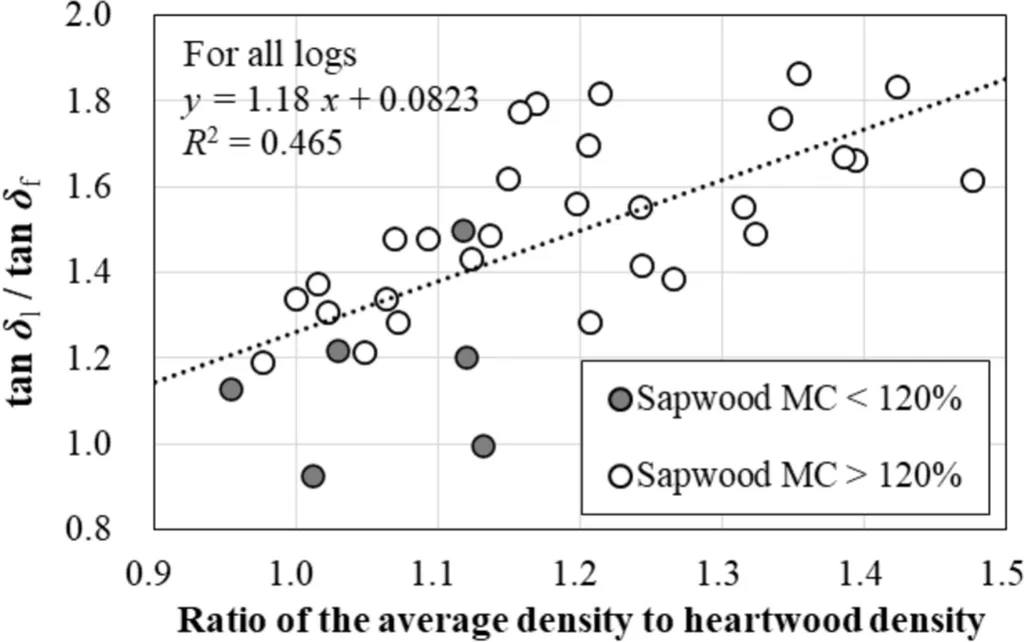In the world of forestry and wood processing, understanding the moisture content of logs is crucial for optimizing yield and quality. A recent study published in the *Journal of Wood Science* offers a novel approach to estimating heartwood moisture content in sugi (Cryptomeria japonica) logs, potentially revolutionizing how the industry assesses green wood.
The research, led by Toshiyuki Fukui of the Daiken Corporation R&D Center, introduces an index value (U) that serves as an indicator of heartwood moisture content. This index is derived from the longitudinal vibrational properties of the logs, a method that could provide more accurate and non-destructive evaluations compared to traditional techniques.
Traditionally, the average moisture content (MC) of logs has been estimated using flexural vibration, which relies on the high negative correlation between specific Young’s modulus (E/ρ) and loss tangent (tan δ). However, this method struggles to differentiate between sapwood and heartwood moisture content. Fukui’s study addresses this limitation by focusing on longitudinal vibrational properties, which are more sensitive to the density differences between sapwood and heartwood.
“By using longitudinal vibration, we can capture the unique properties of heartwood more accurately,” Fukui explains. “This method allows us to estimate heartwood moisture content separately, which is a significant advancement for the industry.”
The study involved testing 35 four-meter sugi logs. The results showed a strong correlation between the index value U and heartwood moisture content. When logs with drying sapwood were excluded from the analysis, the correlation coefficient reached a robust 0.78, indicating a reliable relationship between the index and heartwood moisture content.
The implications of this research are substantial for the agriculture and forestry sectors. Accurate estimation of heartwood moisture content can lead to better decision-making in wood processing, ensuring higher quality products and reducing waste. Non-destructive evaluation methods like this one can also enhance sustainability by minimizing the need for invasive testing.
“This research opens up new possibilities for the industry,” says Fukui. “By improving our ability to assess moisture content, we can optimize the drying process and improve the overall efficiency of wood processing.”
As the industry continues to seek more precise and efficient methods for evaluating wood quality, this study provides a promising avenue for future developments. The use of longitudinal vibrational properties could become a standard practice, shaping the way logs are assessed and processed.
For the agriculture sector, this research highlights the importance of integrating advanced technologies into traditional practices. By embracing non-destructive evaluation methods, the industry can achieve greater accuracy, sustainability, and profitability. As Toshiyuki Fukui and his team continue to refine this approach, the potential for widespread adoption and impact grows, paving the way for a more efficient and sustainable future in wood processing.

